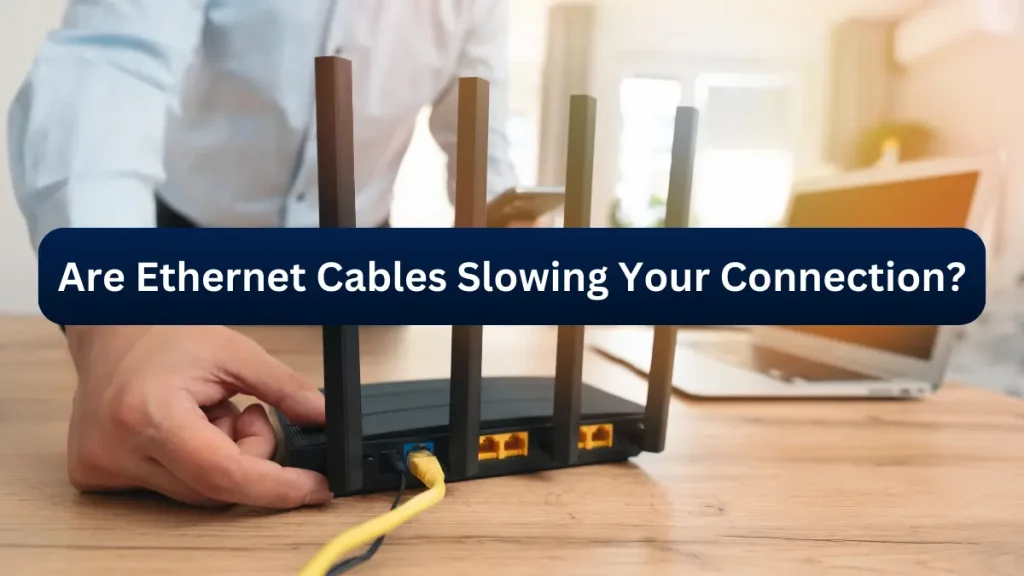
When it comes to internet speed, most people blame their service provider, Wi-Fi interference, or network congestion. But what if the culprit is something as simple as your Ethernet cable? Many assume that a wired connection guarantees the fastest and most stable speeds, but that’s not always the case. The type, quality, and condition of your Ethernet cable can significantly impact your internet performance. In this article, we’ll explore whether your Ethernet cable could be slowing down your connection and what you can do about it.
Understanding Ethernet Cables and Their Role in Internet Speed
Ethernet cables are the backbone of wired internet connections, transmitting data between your modem, router, and devices. Unlike Wi-Fi, which is prone to interference, Ethernet offers a direct connection that should, in theory, provide consistent speeds. However, not all Ethernet cables are created equal. Their category, build quality, and length all play a crucial role in determining how efficiently data is transmitted.
Different Types of Ethernet Cables and Their Speed Limits
Ethernet cables are categorized based on their performance capabilities. The most common types include:
- Cat5 – Supports up to 100 Mbps; outdated for modern internet speeds.
- Cat5e – Handles up to 1 Gbps with reduced interference; still widely used.
- Cat6 – Supports up to 10 Gbps at short distances; better shielding against interference.
- Cat6a – Improved over Cat6, maintaining 10 Gbps speeds over longer distances.
- Cat7 and Cat8 – Designed for high-performance networks, supporting speeds up to 40 Gbps.
Using an older or lower-category cable can bottleneck your connection, preventing you from achieving the full speeds your internet service provider (ISP) offers.
How Cable Quality Affects Network Performance
Beyond just categories, the quality of an Ethernet cable affects its ability to transmit data efficiently. Poorly shielded or cheaply made cables may suffer from signal degradation, leading to slower speeds or connectivity issues. Factors such as internal wiring, shielding, and connector quality all influence performance. Investing in a high-quality cable ensures a more stable and faster connection.
The Impact of Cable Length on Internet Speed
Ethernet cables have distance limitations that impact speed. For example:
- Cat5e and Cat6 can transmit data effectively up to 100 meters, but longer distances may cause signal loss.
- Cat6a, Cat7, and Cat8 offer better performance over extended distances due to superior shielding.
If your cable is too long, especially if it’s of lower quality, you may experience slower speeds and connection drops.
Identifying and Troubleshooting a Slow Ethernet Connection
If you suspect your Ethernet cable is slowing your connection, here’s how to diagnose the issue:
- Check Your Internet Plan – Ensure your ISP is providing the speeds you expect.
- Test with a Different Cable – Swap out your current Ethernet cable with a newer or higher-category one.
- Use Speed Test Tools – Run speed tests to compare wired vs. wireless performance.
- Inspect for Damage – Physical wear and tear, such as frayed wires or bent connectors, can affect performance.
- Upgrade Your Router or Switch – Outdated network hardware may not fully support high-speed cables.
The Role of Network Hardware in Ethernet Performance
Your cable is only one part of the equation. Even if you have a high-speed Ethernet cable, your modem, router, or switch must support the speeds you’re aiming for. Using older hardware with a gigabit Ethernet cable won’t improve performance if the router is limited to 100 Mbps. Always ensure your networking equipment matches your internet plan and cable capabilities.
Shielding and Interference: Hidden Causes of Slow Speeds
While Ethernet is less prone to interference than Wi-Fi, external factors like electrical wiring, power cables, and even fluorescent lights can introduce signal noise. Shielded cables (such as Cat6a and above) help reduce interference, ensuring a cleaner signal and faster speeds. If you’re experiencing slow speeds despite using a high-category cable, consider relocating your setup away from potential sources of interference.
Also Read: Top 10 Internet Speed Check Websites
When to Upgrade Your Ethernet Cable
If you’re still using a Cat5 or an old, worn-out cable, it’s time for an upgrade. Even if your internet plan isn’t extremely fast, upgrading to at least Cat6 ensures future-proofing and better performance. Here are some clear signs that you need a new cable:
- Your internet speed is significantly lower than what your ISP provides.
- You experience frequent disconnects or lag during gaming or streaming.
- The cable is physically damaged or outdated.
- Your network hardware supports gigabit speeds, but your cable doesn’t.
Conclusion
Ethernet cables play a critical role in ensuring a fast and stable internet connection. If you’re experiencing slower-than-expected speeds, your cable might be the culprit. Checking the category, quality, length, and overall condition of your Ethernet cable can help you determine if it’s time for an upgrade. By using the right cable for your needs, you can maximize your internet speed and enjoy a seamless online experience.
FAQs
1. Can an old Ethernet cable slow down my internet speed?
Yes, outdated cables like Cat5 can limit your speed to 100 Mbps, even if your ISP provides faster internet.
2. How do I know if my Ethernet cable is bad?
If you experience inconsistent speeds, frequent disconnections, or visibly damaged wiring, your cable may need replacing.
3. Is Cat8 Ethernet cable worth it for home use?
For most home users, Cat6 or Cat6a is sufficient. Cat8 is mainly for high-performance data centers and enterprise setups.
4. Does cable length affect Ethernet speed?
Yes, longer cables (beyond 100 meters) can experience signal degradation, reducing speed and reliability.
5. Should I use a shielded Ethernet cable?
If you experience interference from electrical wiring or other devices, a shielded cable (Cat6a or higher) can help improve performance.
